by Alan K. Lee
Introduction
Seville, like most European cities, has a long, varied, and very interesting history. It also has a lively and vibrant modern culture. But you can’t begin to describe Seville in a few sentences, there’s just too much to it. You can’t grasp Seville by reading about it. You have to experience it in person to really take it in. And we could only scratch the surface in the short three days that my wife and I had on our recent trip to Portugal and Andalusia. But it was a great three days.
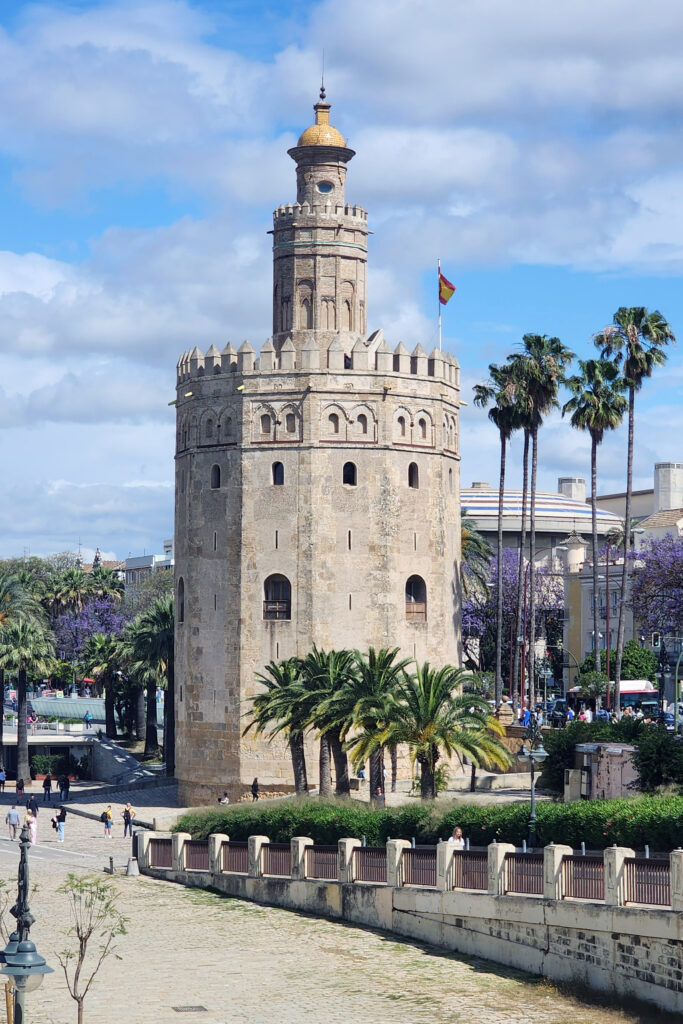
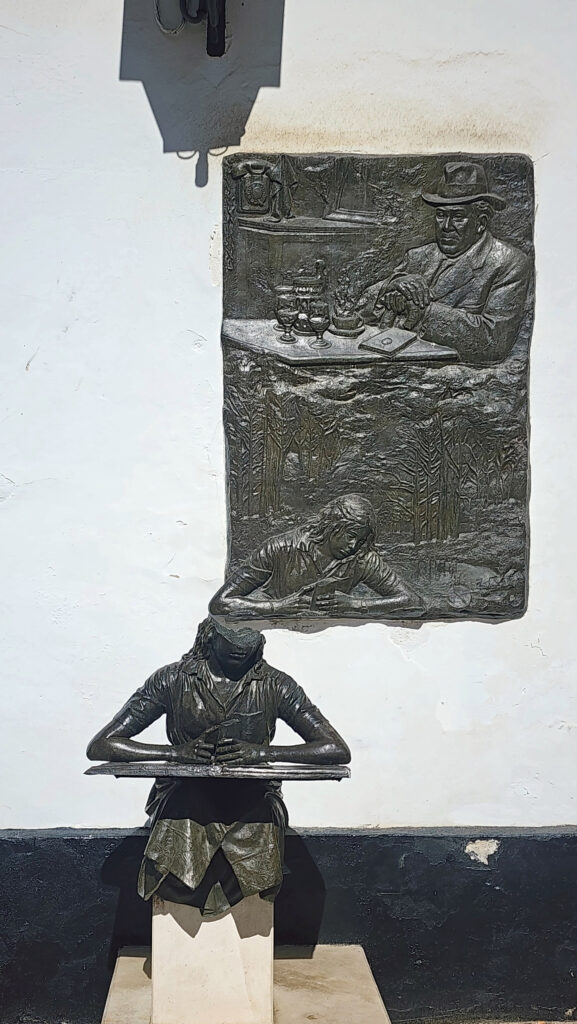
So, if you’re planning a visit, doing your homework is essential. There is so much to see and do in Seville that you can’t do it all, unless you are staying for an extended time. Pick the places to see and things to do that interest you the most. Figure out how much time you need to see or do each and plan accordingly. But also try to leave some time to just wander the streets and see what you find. My wife and I have had many memorable unplanned experiences in our travels by doing just that.
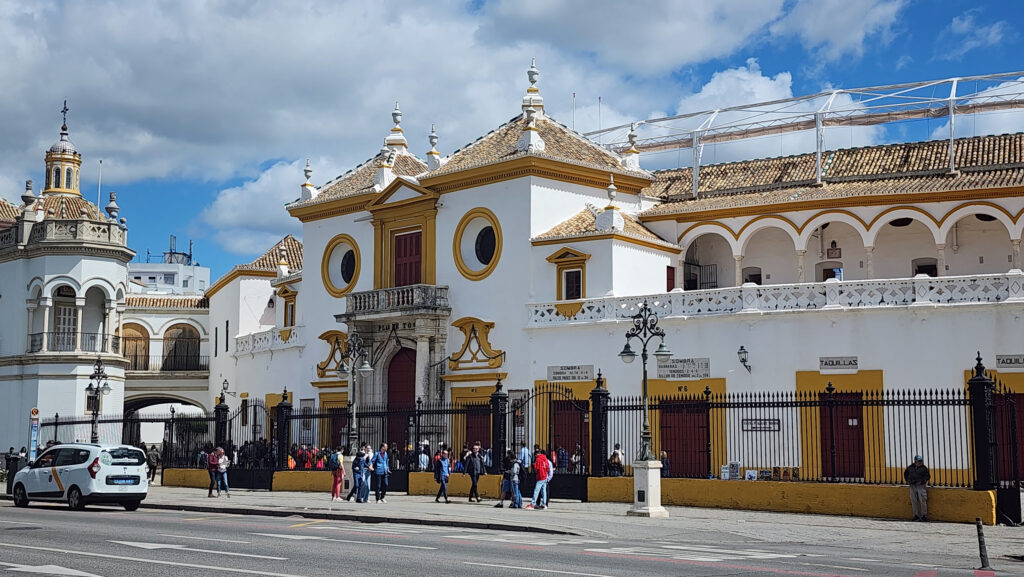
You’ll find that a few things come up over and over in articles about Seville. If you’re a foodie, you’ll want to do a tapas tour. If you’re a fan of dance (or just curious), you’ll want to take in a flamenco performance. If you want to get into the depths of Seville’s culture, you might want to schedule your visit to be able to take in a bullfight, or maybe just visit the Plaza de Toros and its museum. You probably won’t find much emphasis on bullfighting in the guidebooks, but it is (or at least was) a big part of Andalucian culture. We did none of those things, though.
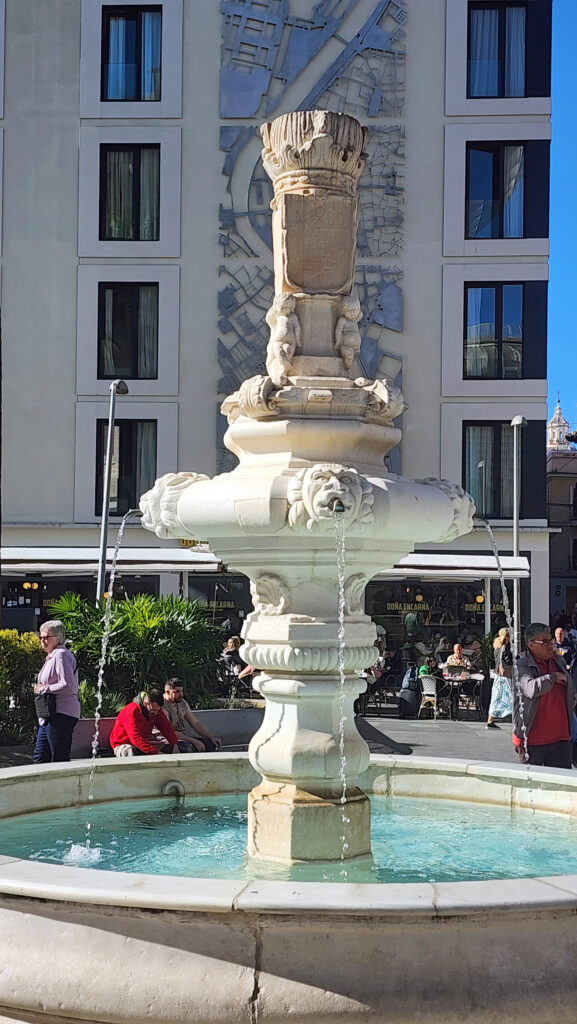
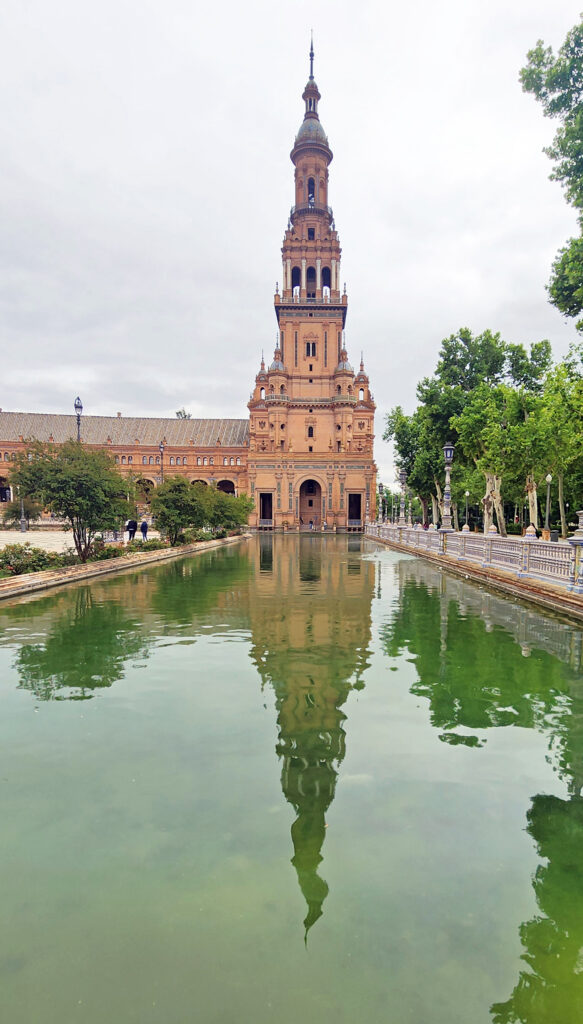
What we did do was tour the Seville Cathedral and climb the Giralda bell tower, tour the Real Alcazar palace and gardens, and visit the Triana district, the Plaza de España, and the Alameda de Hercules. We also took in the Setas de Sevilla (aka The Mushrooms), the large wooden sculptural canopy that is utterly unique to Seville. And we spent some time just wandering through the old center of the city, as we usually do when visiting European cities.

Seville Cathedral and La Giralda Tower
The first cathedral in Seville was originally a mosque (built between the years 1172 and 1189 during the Moorish occupation of the Iberian Peninsula). When Ferdinand III conquered Seville and brought it back under Christian rule in 1248, the mosque was converted into a Christian cathedral. The present-day Seville Cathedral was built in the 15th century (on the same site) to replace the converted mosque. Many additions, expansions, and repairs were made over the centuries, extending into the early 20th century.
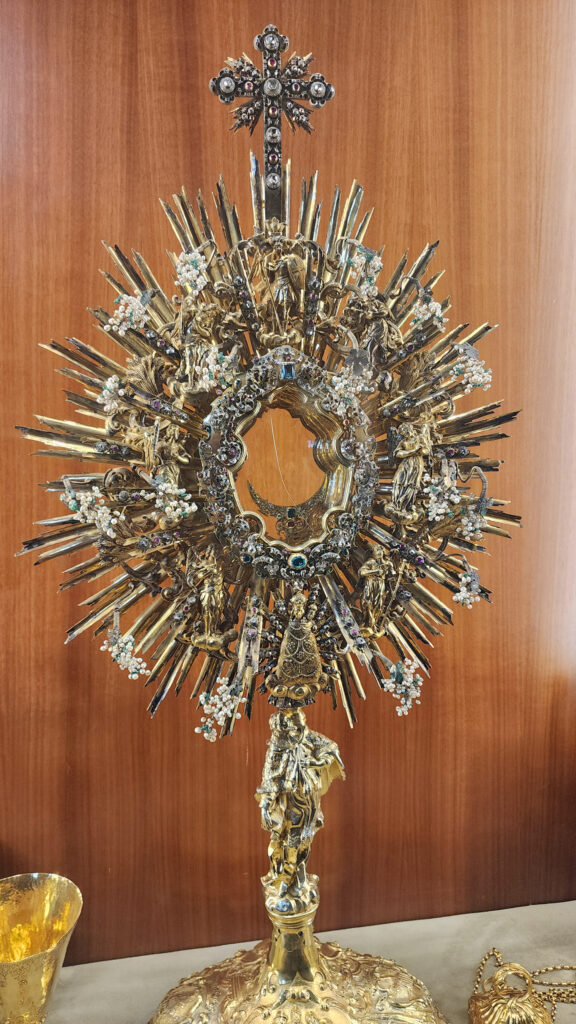
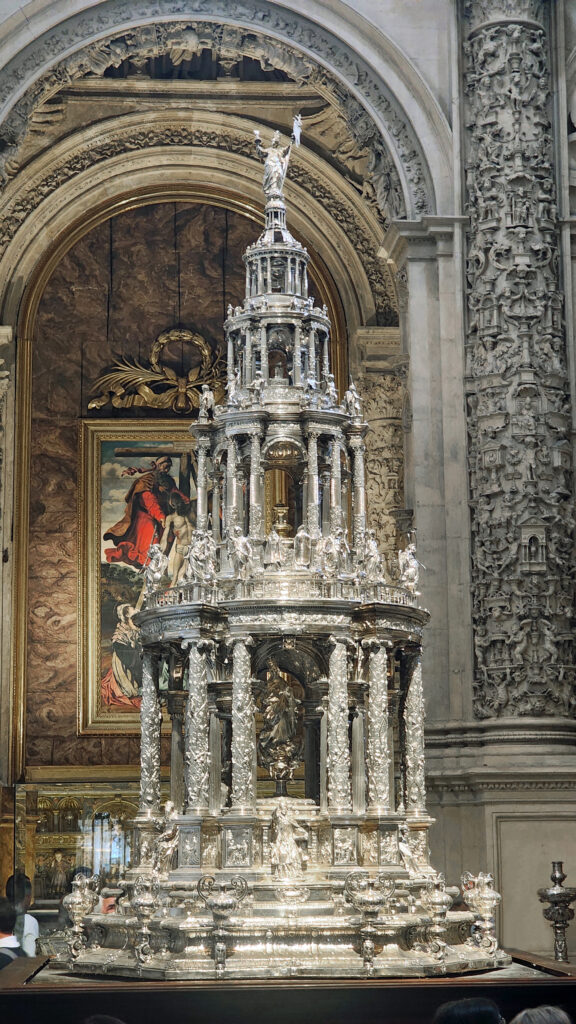
The interior of the cathedral is huge. It’s Spain’s largest and tallest cathedral, the third largest church in the world, and the largest gothic structure in the world. Inside, there’s a vast array of paintings, sculptures, and displays. The cathedral website says you should allow 75 minutes to tour the cathedral, but you could easily spend hours. It may not be the most beautiful or most impressive cathedral in Europe, but it’s certainly worth a visit.
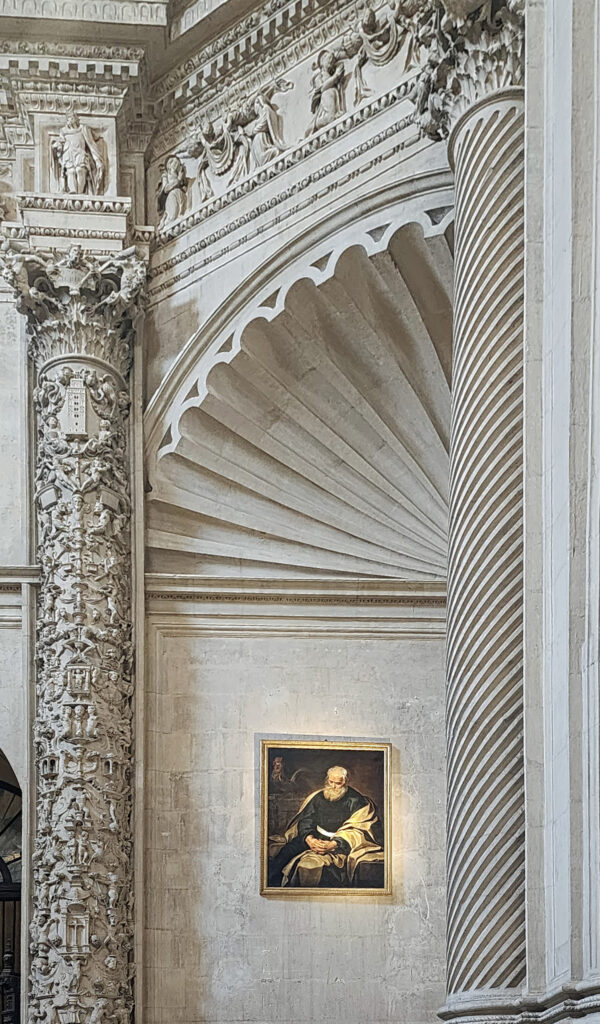
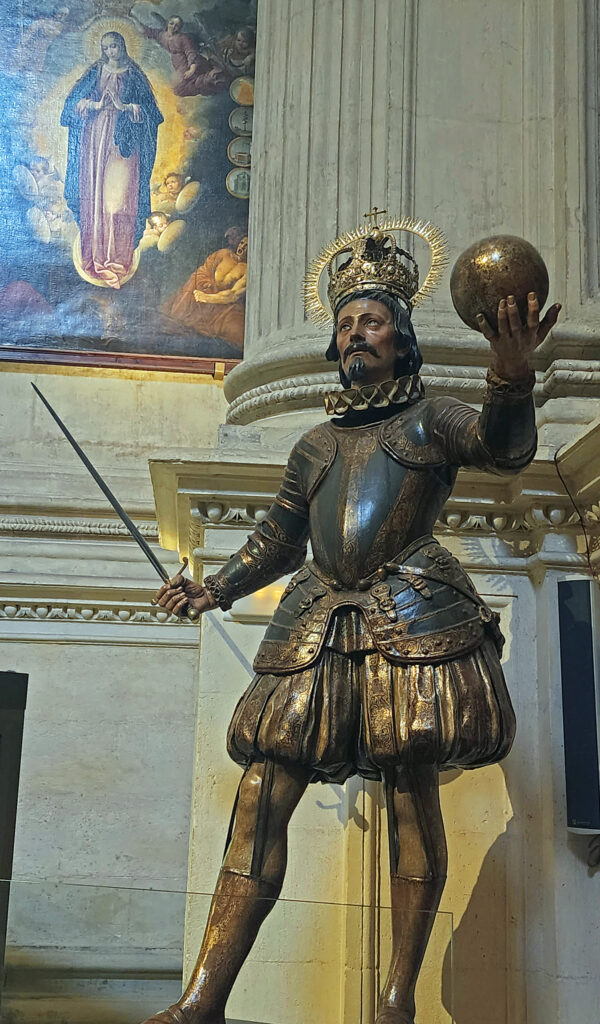
Although tickets can be purchased at the cathedral, purchasing online in advance is recommended to avoid the often-long lines at the ticket office. Tickets can be purchased up to seven weeks in advance on the official Seville Cathedral website. Online general admission adult tickets are currently (2024) €12.00 per person. Admission for seniors (65+) and students (13-25) is €6.00. Admission is free for children under 13. Guided tours are available for €20.00 and tours last about 90 minutes. An audio guide is available for €5.00. On site ticket prices are €1.00 more than online prices. Tickets include entry to the Giralda bell tower.
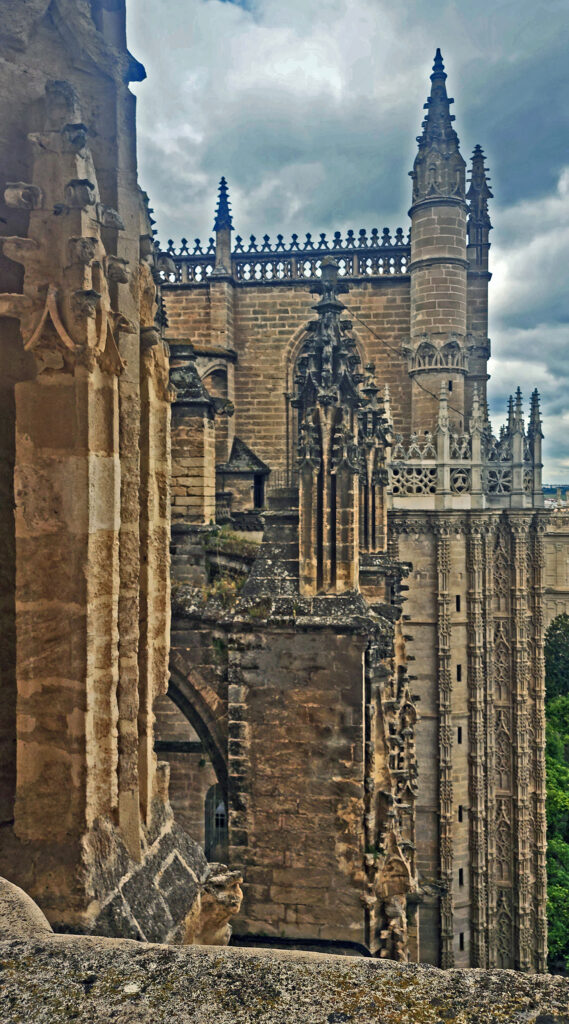

Even with advanced purchase, entry lines can be long, especially at the main entrance on the west side of the cathedral. With tickets in hand, you can also enter through the Court of the Orange Trees (which dates to the Moorish occupation) on the north side, which had a much shorter line. The entrance to the courtyard is adjacent to the Giralda bell tower on the east side of the cathedral.
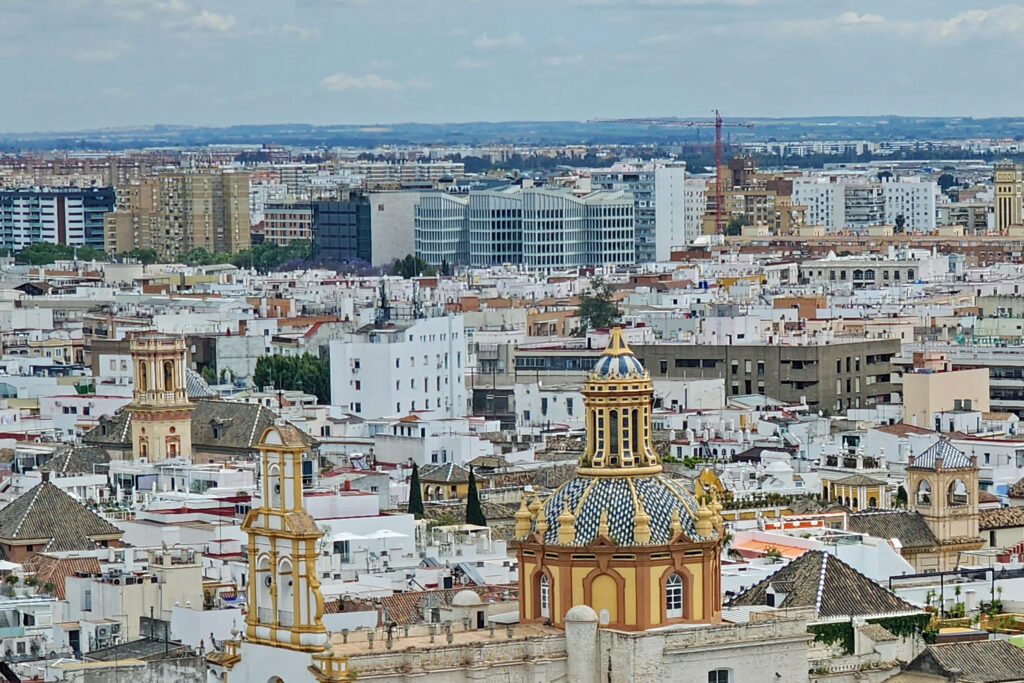
The 322-foot tall La Giralda bell tower pre-dates the cathedral. The lower portion dates to Roman times. The middle section was added by the Moors and became the mosque’s minaret. The present top section of the tower was added in the 16th century to replace the original top section, which collapsed in 1356.

The climb to the top of the tower was crowded and slow, and the viewing area was elbow-to-elbow. The views of the city and cathedral exterior are magnificent, but viewing was hampered by the crowd and the fact that the view is through wire mesh covered openings. Smart phone camera lenses are small enough to take unobstructed photos through the mesh openings, though, and there are openings that can be accessed on your way up or down that are less crowded (but with views that aren’t quite as expansive as from the top of the tower).
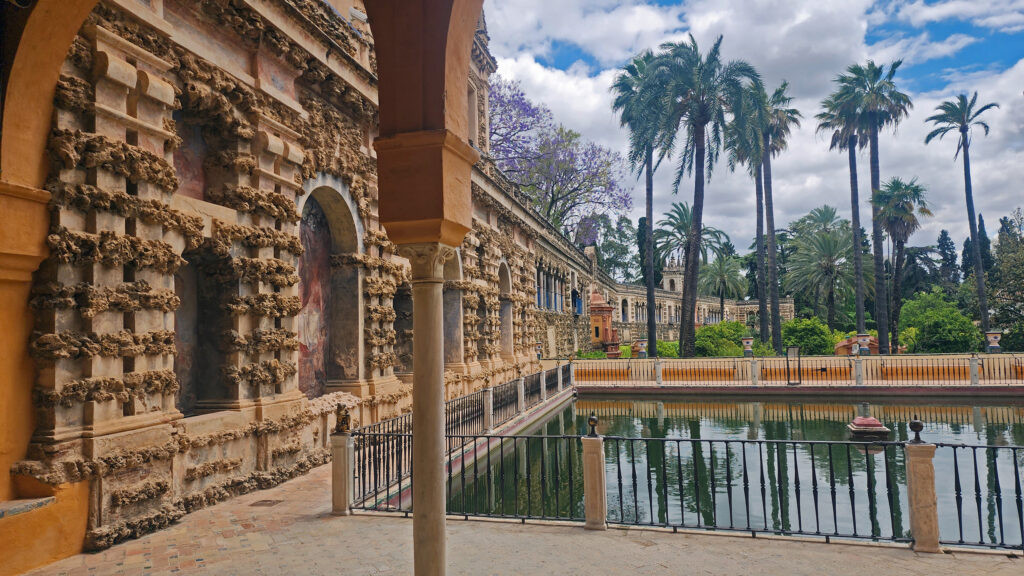
The Real Alcazar
The Real Alcazar (or Royal Palace) is located just south of the Cathedral. The original palace complex was built by the Moors but little of the original alcazar remains, beyond the name (alcazar is an Arabic word meaning castle or palace). Much of what you see today was constructed in the 13th and 14th centuries.
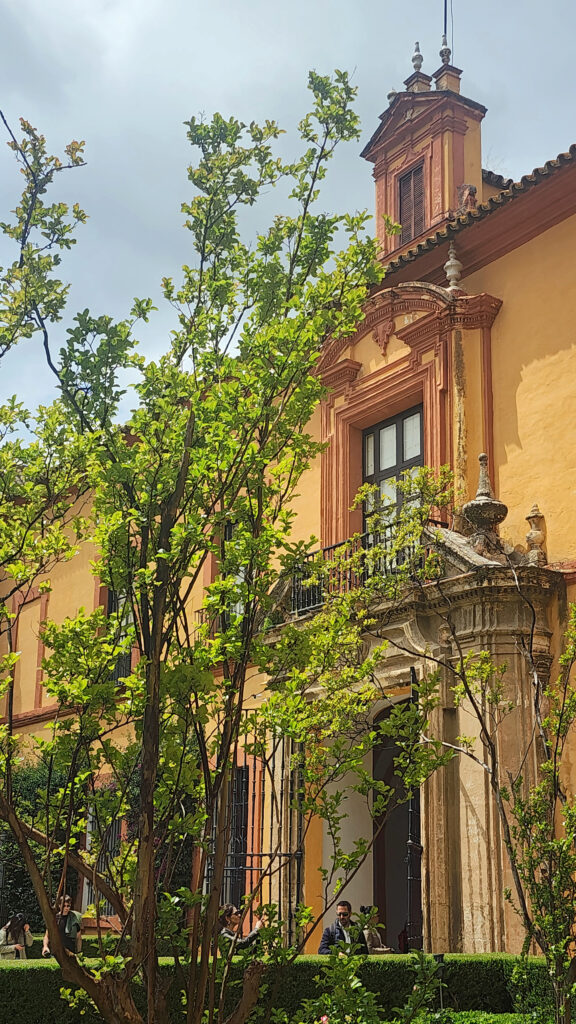
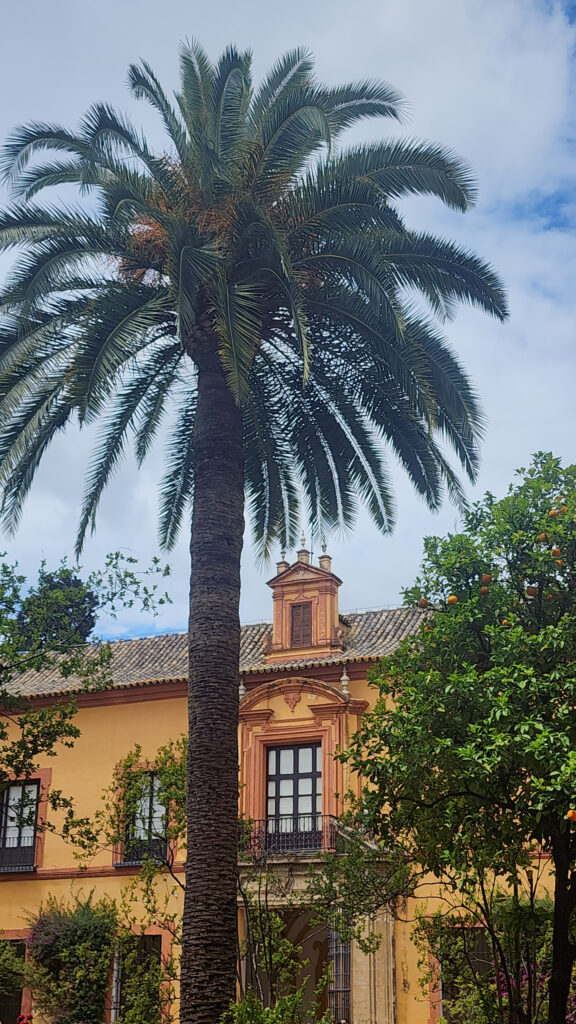
The Real Alcazar consists of a series of interconnected buildings and courtyards (called patios). You enter through the Puerta de Leon (Lion’s Gate) on the northwest corner of the complex. The combination of buildings and patios is even larger in area than the Seville Cathedral. Add in the adjacent gardens and you have a truly huge complex. I think you could easily spend half a day exploring it all.
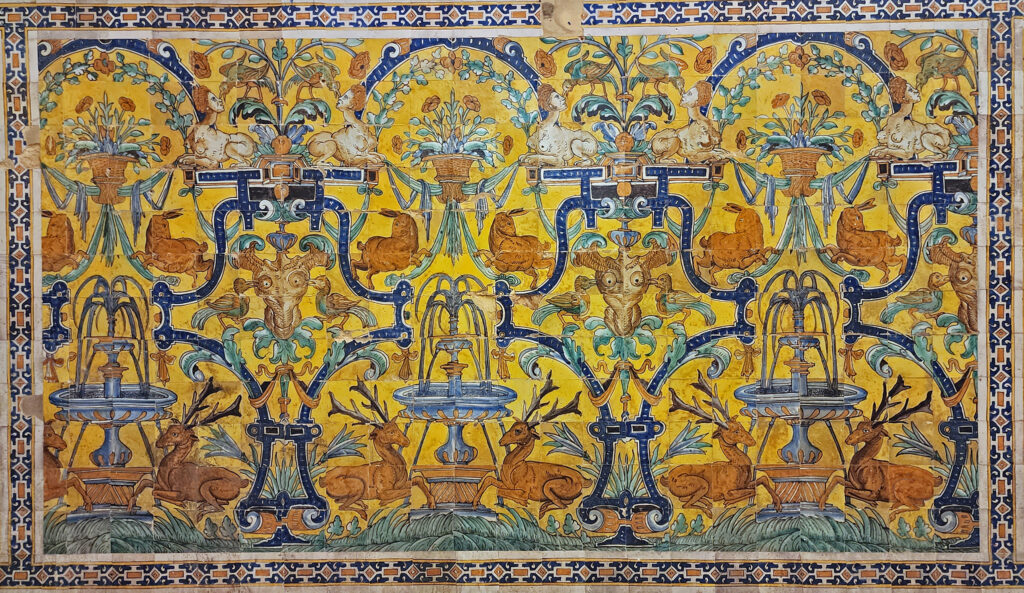
For my money, the Real Alcazar is more impressive and more beautiful than the Seville Cathedral. The interior and some of the exterior is adorned with incredibly intricate, colorful, and stunningly beautiful tile work. Room after room of it. And in one of the palace’s rooms, you’ll find six huge, amazingly detailed tapestries that are truly impressive. We spent more time (about two hours) in the Real Alcazar than we did in the Seville Cathedral and that doesn’t include the time we spent exploring the palace gardens.
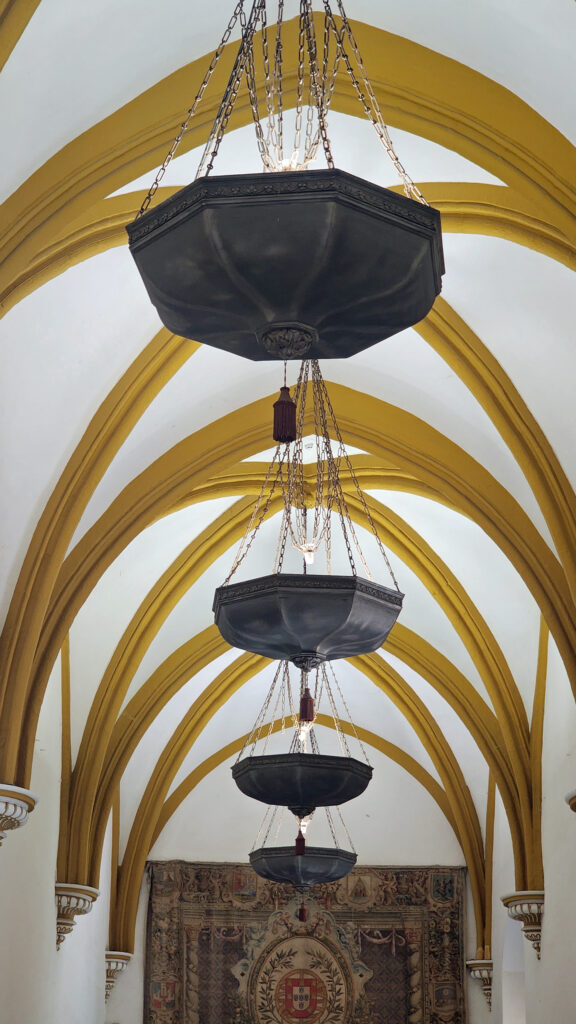
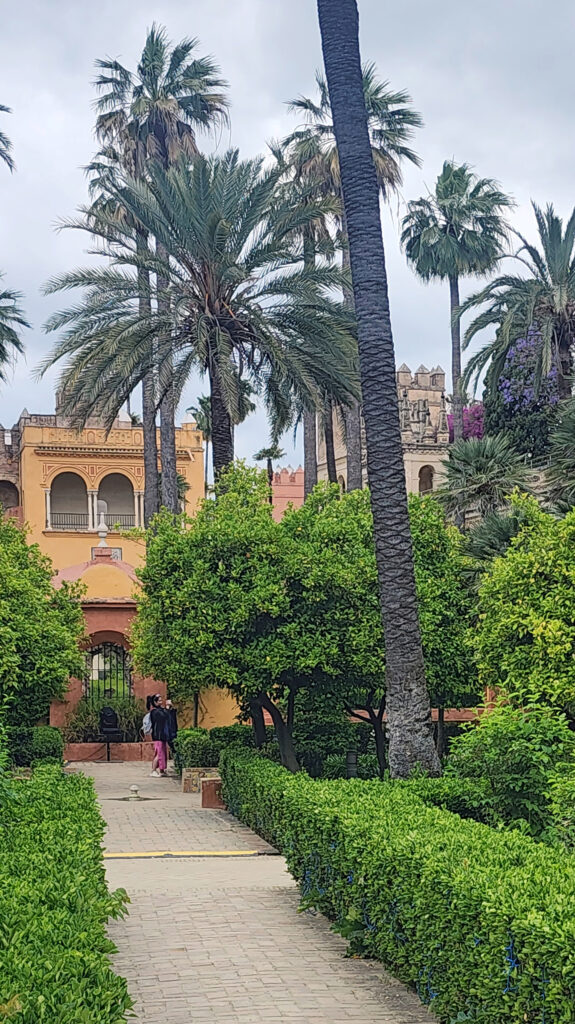
The realalcazarsevilla.com website describes the gardens as “one of the most beautiful and special gardens in the world.” I’m not sure I’d go that far, but they are beautiful, and we spent a good amount of time wandering through them after our tour of the interior.
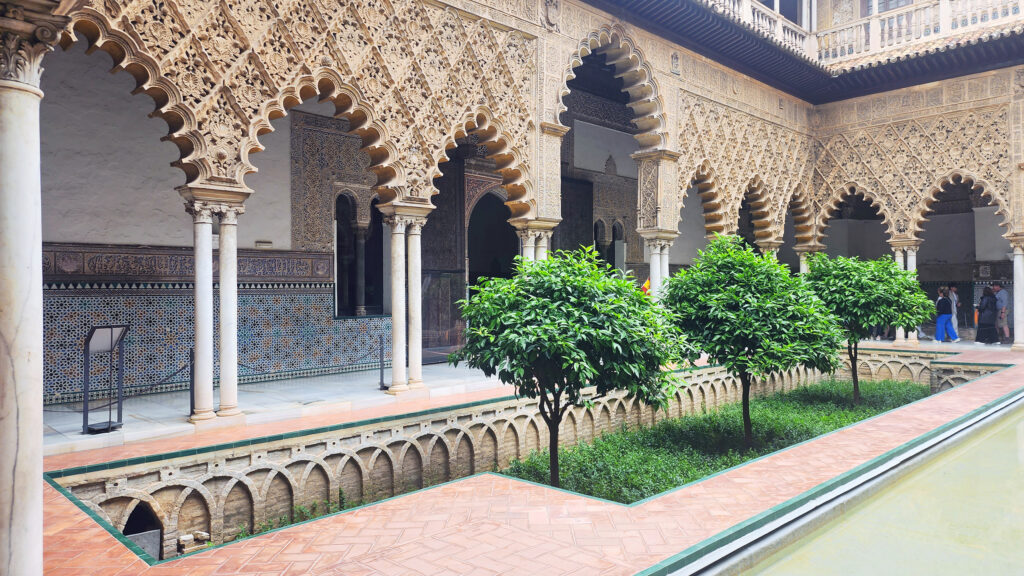
General admission tickets to the Real Alcazar cost €13.50 for adults and €6.00 for seniors (65+) and students (14-30). Admission is free for children (13 and under) and the disabled. Admission is free for all on Monday evenings (6-7 pm spring and summer, 5-6 pm fall and winter). As with tickets to the cathedral, buying in advance online (go to alcazarsevilla.org) is recommended.
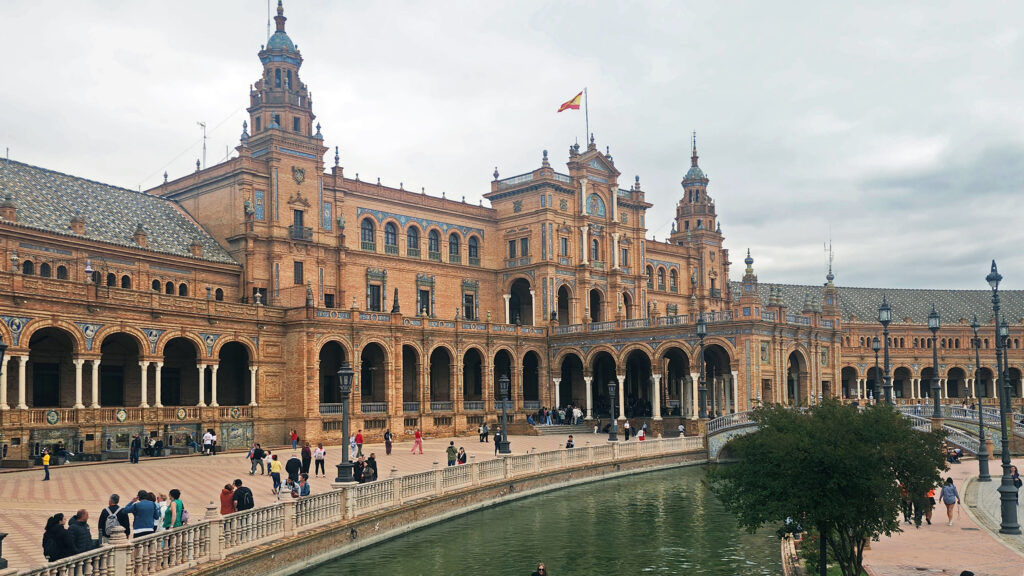
The Plaza de España
The Plaza de España was constructed for the 1929 Ibero-American Exposition, which was held to make symbolic peace with Spain’s former American colonies. The semi-circular plaza is ringed by architecturally impressive buildings, most of which now hold government offices. A wide canal separates the plaza from the buildings. There are towers at each end of the ring of buildings and a large fountain in the center of the plaza. Admission is free.
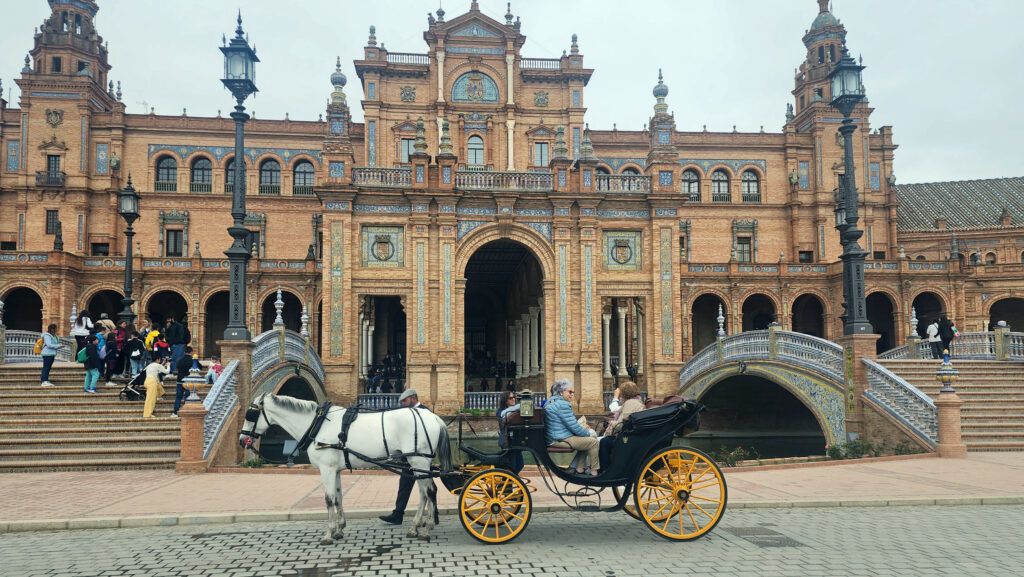
The plaza is beautiful at any time of the day (we were there in the afternoon), but it might be at its most stunning after sunset when the plaza, the fountain, and the surrounding structures are all lit up. And you might even be able to catch a free flamenco performance in the plaza. We didn’t explore the adjacent Maria Luisa Park, but from the photos I’ve seen, the park clearly rivals the beauty of the gardens at the Real Alcazar.
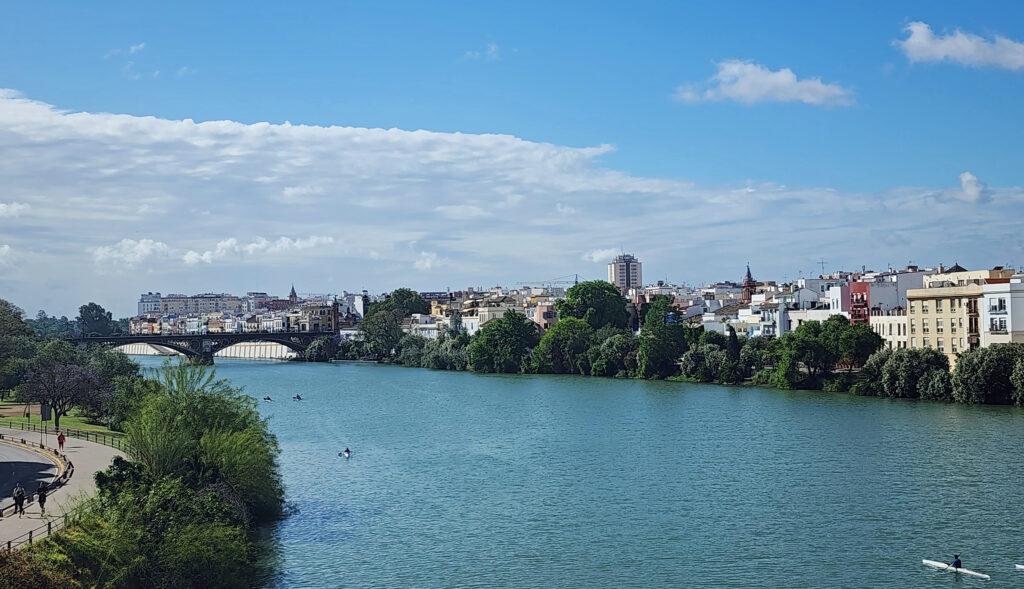
The Triana District
Separated from the main downtown area of Seville by the Canal de Alfonso XIII, Triana is a charming neighborhood of shops, cafes, bars, and historic buildings. If you walk across the Triana Bridge (the Puente de Triana, aka the Puente de Isabel II) from downtown Seville, you first come to the Capilla del Carmen and then the remains of the Castle of San Jorge, which was the headquarters of the Spanish Inquisition in Seville. The Triana Market (Mercado de Triana), to the north of the bridge, sits within the footprint of the ruined castle. The market is filled with fruit and vegetable stands and small cafes and bars, and it’s a great people watching spot. To the west of the Triana Market, there is a small museum (the Museo de la Ceramica de Triana) dedicated to the tile and pottery shops that Triana was once known for, a few of which are still in operation.
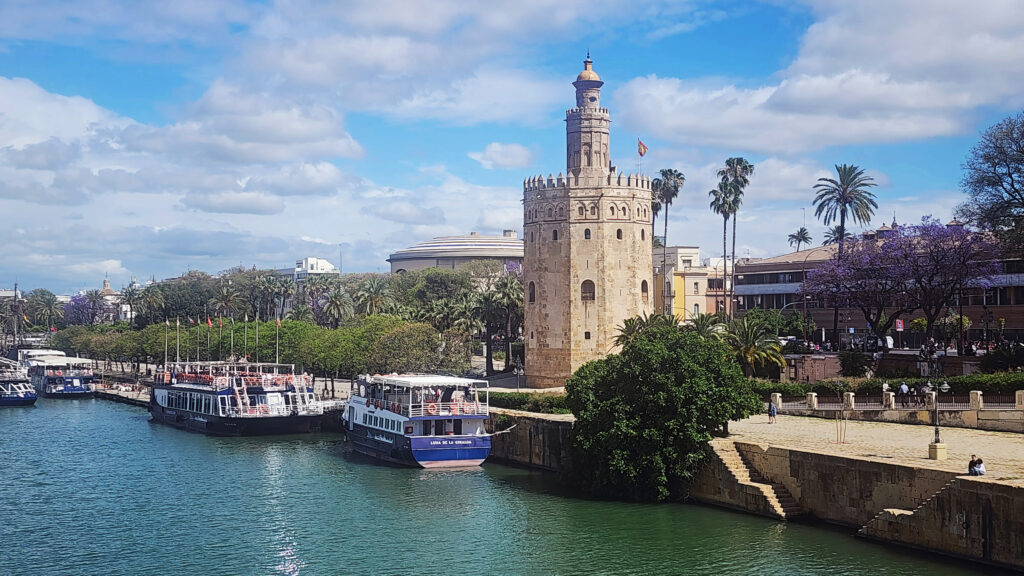
The Calle de San Jacinto is a pedestrian only street leading away from the bridge into the heart of Triana that is lined with cafes and shops, and there is a pedestrian walkway along the shore of the canal that offers views of the Seville Cathedral, the Plaza del Toros, and the Tower of Gold (Torre del Oro). All in all, the Triana district is just an enjoyable and scenic locale that is well worth exploring.

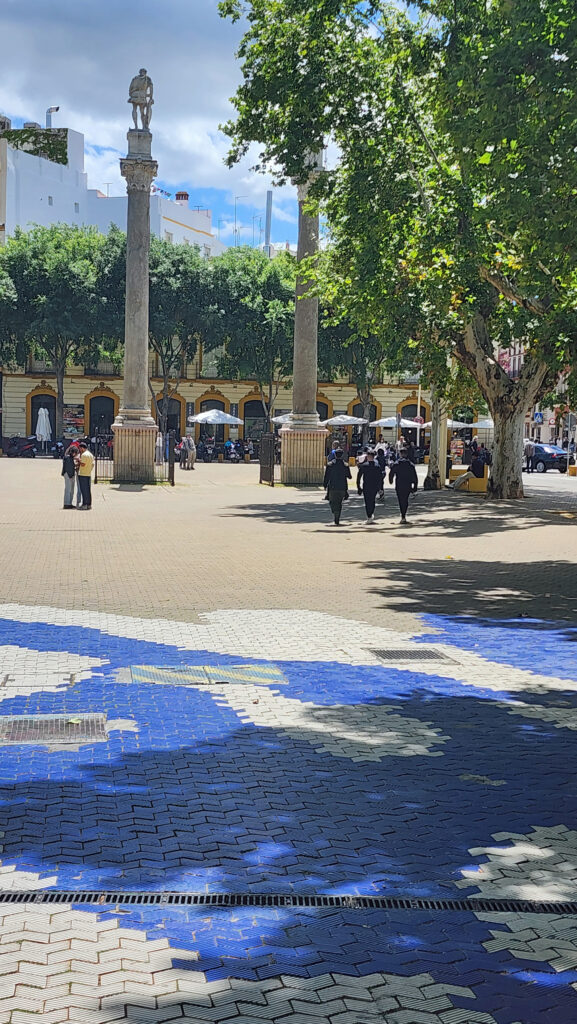
The Alameda de Hercules
The Alameda de Hercules is a long rectangular tree-filled plaza in the northern part of the historic center of Seville. Many cafes and restaurants front the plaza. There is a children’s playground, many shaded benches, and the plaza is bookended by tall columns. The columns at the southern end are topped by statues of Hercules and Julius Caesar. The slightly shorter columns at the north end are topped with stylized lions. The Alameda is known for its vibrant nightlife and the area’s gay friendly neighborhoods. There is a monument in the plaza to the victims of AIDS.

The Mushrooms
The Setas de Sevilla is an undulating canopy in the center of the historic center, north of the Seville Cathedral, that is unlike anything you’ve seen anywhere else in the world. The wooden sculptural canopy is huge, 480 feet long by 220 feet wide by 85 feet high and purportedly the largest wooden structure in the world. It consists of six connected “parasols” resembling mushrooms, hence its common name. (It was originally called the Metropol Parasol and that may still be its official name).

You can walk around under the canopy at street level for no charge. Paid entry (€15.00) gets you into the below ground museum displaying Roman artifacts found during construction, an upper-level restaurant, and walkways that wind through and over the top of the structure that give great views of the surrounding city.
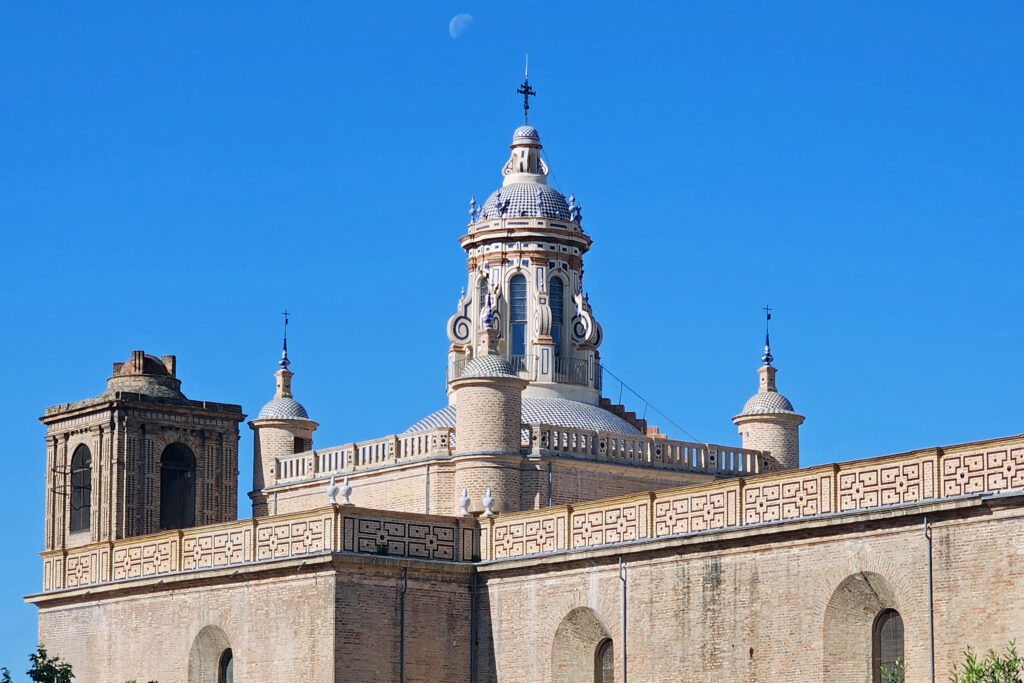
What We Didn’t Do, But Should Have
Basically, what we didn’t do was give ourselves another day or two to more fully explore Seville. Our visit, though, was on a two-week vacation with a packed itinerary that also took us to several sites Portugal (see my posts on Lisbon, Sintra, and Faro and the Algarve) and several more in Andalusia (see future posts on Cordoba, Granada, and Ronda), so we would have had to cut out something that we very much wanted to see.
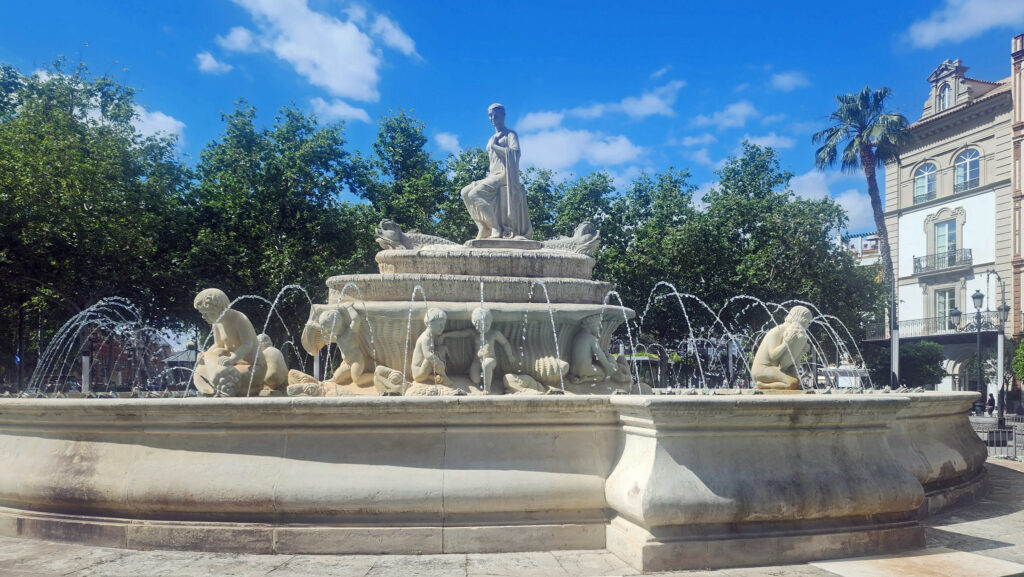
But if we did have some additional time, we would have taken in the Barrio Santa Cruz district (to the north and east of the Cathedral and the Real Alcazar) and Maria Luisa Park, done a food tour, and visited a few of the city’s many museums and art galleries. But that’s for the next time, if we ever return.
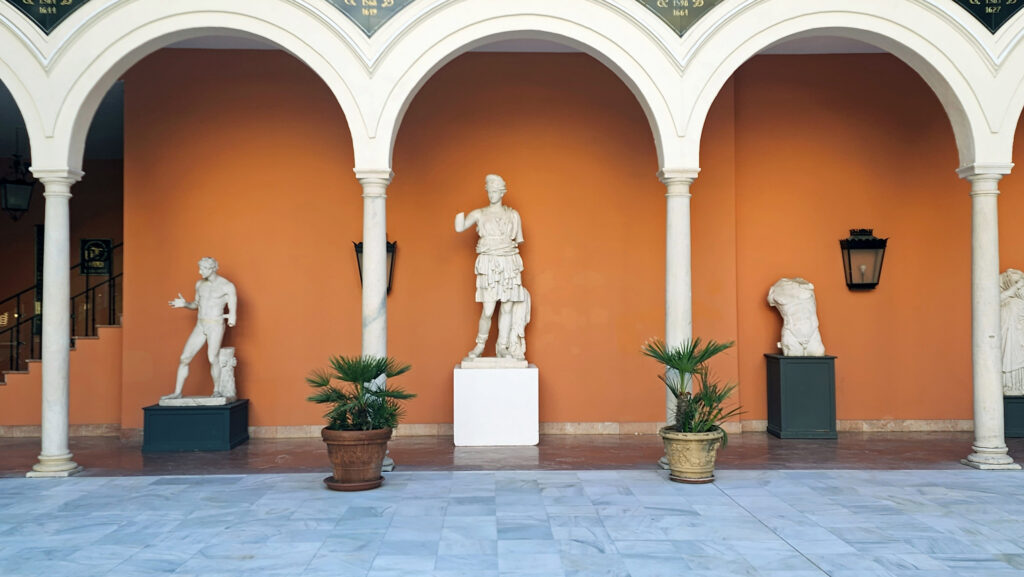
Conclusion
Seville is a wonderful city, full of history, magnificent architecture, friendly people (although anti-tourism sentiment there is growing), charming neighborhoods, quality restaurants and cafes, many museums, and beautiful parks and plazas. It’s known for its cuisine, nightlife, and lively modern culture. I can’t imagine any visitor to Seville coming away disappointed.
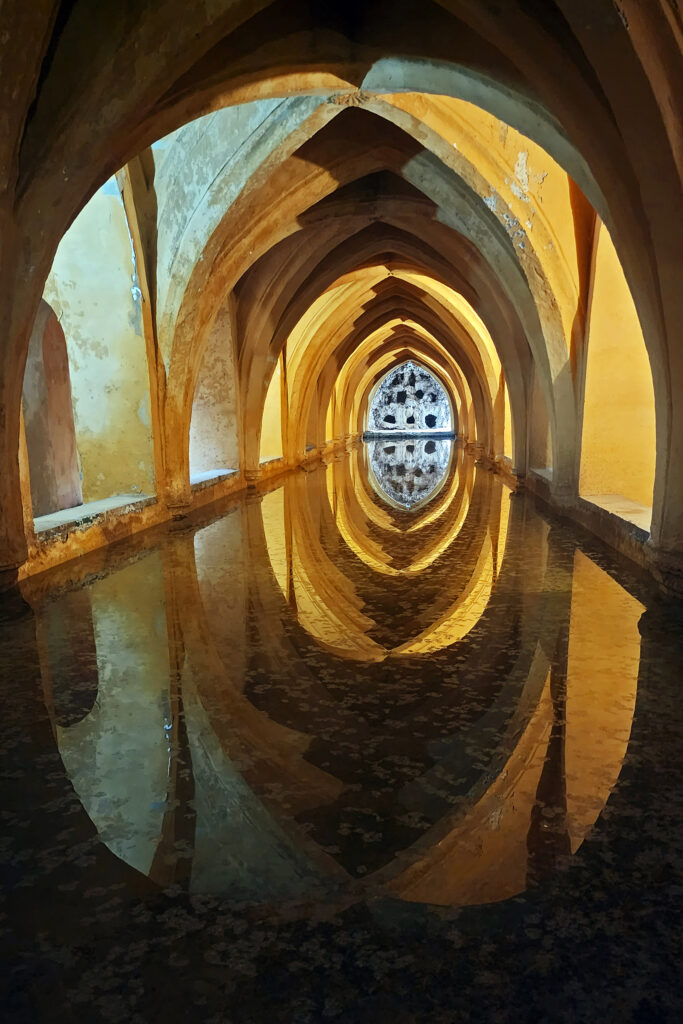
Posted August 30, 2024
All photos © Alan K. Lee

